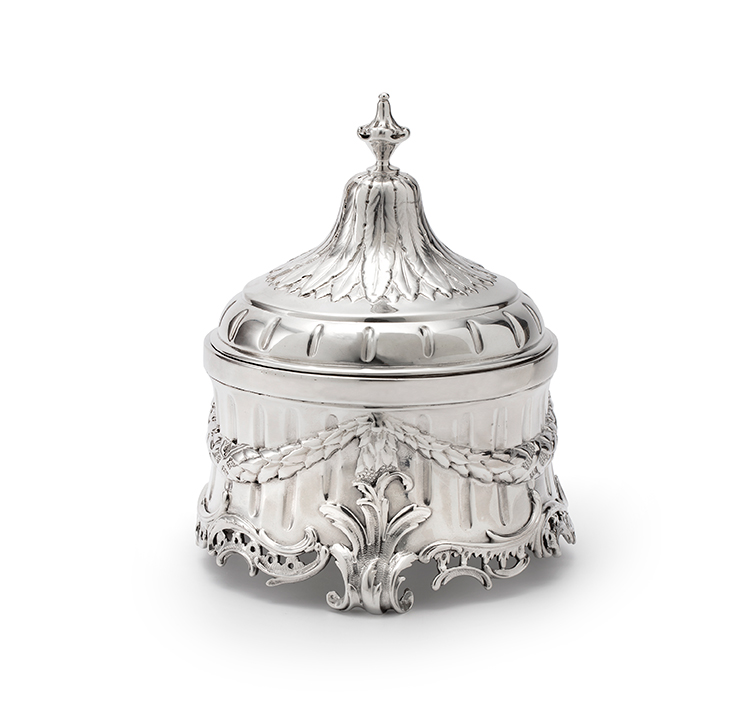
Dutch silver tobacco jar
About This Project
Dutch silver tobacco jar
Johannes Schiotling
Amsterdam, 1789
589 grams; 17,5 cm high
The circular concave tobacco jar is fluted and embossed with foliate swags. The openwork c-scroll border at the base is alternated by applied foliage above the three scroll supports. The detachable cover is chased with stiff foliage, radiating below the silver finial. The cover has a gilt interior. Fully marked at the reverse and displaying assay stripes. Also marked with a duty mark of Zierikzee for 1795.
Nowadays, Dutch silver tobacco jars can be found in museums and private collections, but in the past they were actually used by pipe-smoking magistrates and merchants, who loved to surround themselves with precious objects. From 1720 -1790 the finest silver tobacco jars were made throughout the Netherlands, in various styles and sizes. Thereafter, they often came with a matching brazier, containing coals for lighting the clay pipes. In a jar the tobacco would be well preserved and kept dry.
Johannes Schiotling (1730-1799) was born in Göteborg, Sweden. At the age of seventeen he committed himself to a six-year training with Olof Fernlof, a master silversmith.
Around 1760 Schiotling arrived in Amsterdam. Like so many young silversmiths from abroad at that time, he was drawn to the tolerant and wealthy city of Amsterdam, where numerous foreign craftsmen could flourish. In 1762 he enrolled in the guild and one year later he married Margaretha Sophia Janssen from Aurich. Her brother Johann Diedrich Janssen was a formal witness at the wedding and in 1766 he joined Schiotling’s workshop, together with three other silversmiths: Jan Arend, Wilhelmus Angenendt and Christoffel Mittscherlich. The latter was an excellent chaser. In 1771 Schiotling bought a house at Kalverstraat, opposite Heiligeweg in Amsterdam, where he opened a shop, a ‘kashouderij’. His workshop remained in Egelantierstraat. Schiotling’s two sons, Johannes Hendrik and Andreas also became silversmiths. After Schiotling’s death in 1799, his widow Margaretha and his son Andreas took over the workshop.
Christopher Mittscherlich made a lovely double portrait of the couple in wax, which is now in the collection of the Amsterdam Museum and used to be in the Hartcourt Collections until 1993. With the design for this tobacco jar Schiotling and his employees in his workshop at Egelantierstraat in Amsterdam followed the then ruling fashion. Similar tobacco jars were made in this workshop in 1776, 1782 and 1783. Two of them are now in the collection of the Rijksmuseum, Amsterdam.
Provenance:
-Sotheby’s Londen, 3 juli 1980, lot 179
-Dutch art trade, 1980
-Private collection, Nederland
For more information, click here



